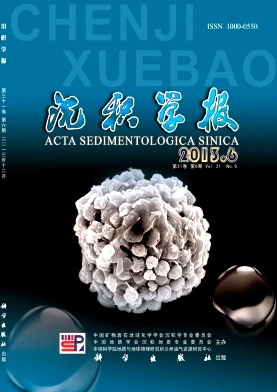Travertine in South Bank of Dogai Coring, Tibet: Geochemical characteristics and potash geological significance
- Publish Date: 2013-12-10
-
Key words:
- travertine /
- Dogai Coring /
- REE /
- potash
Abstract: There are a series of depositing travertine domes and salt springs in South Bank of Dogai Coring of Tibet. With results of chemical composition of springs, we found that these springs have a high K concentration and belong tolixiviation brine. Thus, determining the source of K is a very important question. The research on travertine will help us resolve this Problem. Travertine in this area were composed of autochthonous travertine and clastic travertine,and have a high K ,Fe and light REE concentration. REE distribution patterns of different springs have the same trend and show that mineral substance of springs water come from the same stratigraphic position. With a REE comparison of travertine and major strata, we confirm that travertine and Suowa Formation have obvious genetic relationship. This result is consistent with correlation analysis for travertine and Suowa Formation. Combined paleographic and paleoclimatic data, we think that Suowa Formation has an exploration potential of potash. In addition, δD, δ18O and δ13C of salt springs and travertine indicate that H2O of springs come from atmospheric precipitation and CO2 of travertine has a characteristic of lithosphere deep source. Also, travertine in this area is thermogene travertine.
| Citation: | Travertine in South Bank of Dogai Coring, Tibet: Geochemical characteristics and potash geological significance[J]. Acta Sedimentologica Sinica, 2013, 31(6): 1031-1040. |






 DownLoad:
DownLoad: